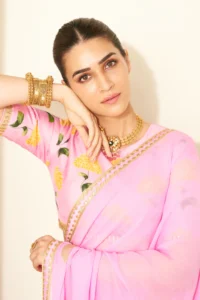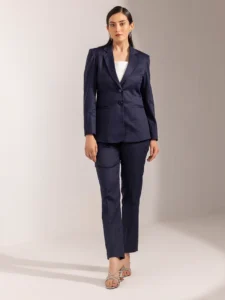About Winter Season
The coldest season of the year is winter. It’s an era of striking contrasts and enthralling appeal. Temperatures drop when the Northern Hemisphere tilts away from the sun, turning the surrounding terrain into a winter wonderland of snow and ice. Winter may provide difficulties, but it also presents a special chance to enjoy the peace and quiet of the season and partake in wintertime activities that are best enjoyed in the cold.

The exact date when winter officially begins varies depending on the calendar. Astronomical winter in the Northern Hemisphere begins with the winter solstice, which normally falls on December 21 or 22. It concludes with the spring equinox, which occurs on March 20 or 21. January, February, and December are usually the three months with the lowest average temperatures; these are referred to as meteorological winter.
The natural world undergoes a profound change when winter approaches. Deciduous trees lose their leaves in the winter when the weather gets colder, and their limbs extend out into the sky like skeleton fingers against the gray sky. A monochromatic palette of white, brown, and black replaces the once-vibrant greens and yellows of autumn.
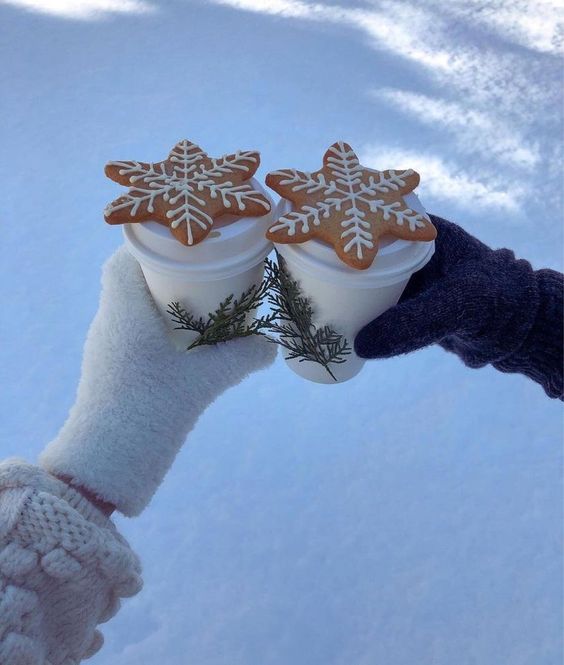
Another thing to do in the winter is stay indoors and seek out warmth and comfort from the outside environment. Houses are decked out for the holidays, fireplaces roar with cozy fires, and the smell of freshly baked delicacies permeates the air. Families get together to celebrate the holidays, sharing food, giving gifts, and making priceless memories.
Here Are Some Essential Fabrics For Winter
The fabrics to wear these season are : Wool, Cashmere, Fleece, Cotton, Flannel, Velvet, Corduroy.
1. Wool Winter Fabric
A naturally occurring fiber, wool is derived from sheep’s fleece. For generations, people have utilized this ancient and very adaptable fabric to create garments, blankets, and various textiles. Wool is a popular choice for winter clothing because of its warmth, softness, and durability.
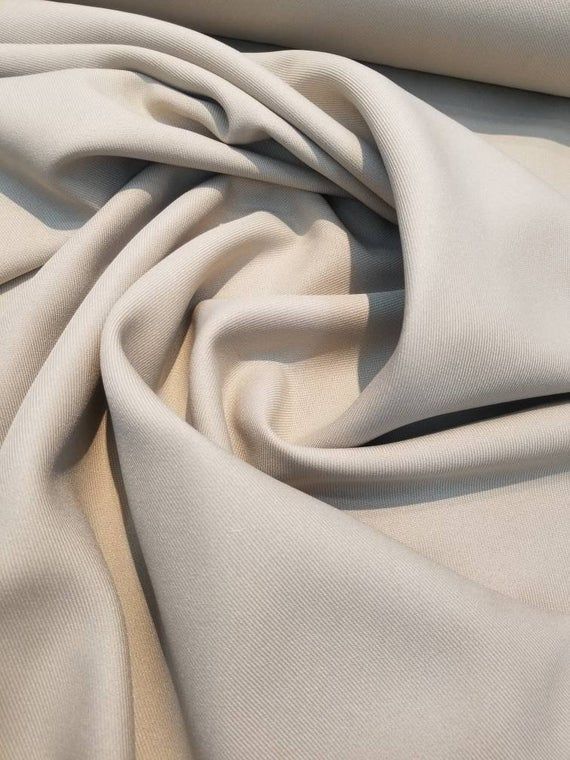
Wool Fabric provides :
- Warmth: Since wool is a natural insulator, it traps heat in the body. For winter apparel like coats, caps, and sweaters, this makes it the perfect fabric.
- Durability: Wool is a robust, sturdy material that is resistant to deterioration. If given the right care, wool clothing can endure for many years.
- Wool’s silky, velvety fibers feel good against the skin. For apparel that will be worn close to the skin, such base layers and pajamas, this makes it a wise option.
- Wool has the ability to absorb moisture and wick it away from the skin. Even while perspiring, this aids in keeping the wearer dry and at ease.
- Naturally devoid of microorganisms, wool has a strong resistance to odors. Because of this, it’s a great option for long-wearing apparel, such hiking attire and travel attire.
- Breathable: Wool is a fabric that breathes, facilitating air circulation throughout the body. The wearer will remain comfortable thanks to this in a range of climates.
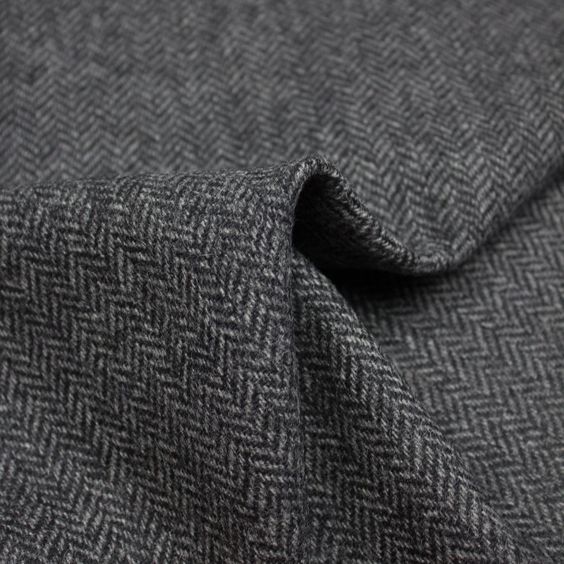
2. Cashmere Winter Fabric
Known as the “fiber of kings,” cashmere is an opulent natural fiber that is highly prized for its remarkable warmth, softness, and lightweight quality. It comes from the undercoat of cashmere goats, which are mostly found in high-altitude areas of China and Mongolia. These goats need a thick layer of insulation to keep them safe throughout the severe winters. Cashmere’s high cost is partly due to the labor- and time-intensive nature of its production.
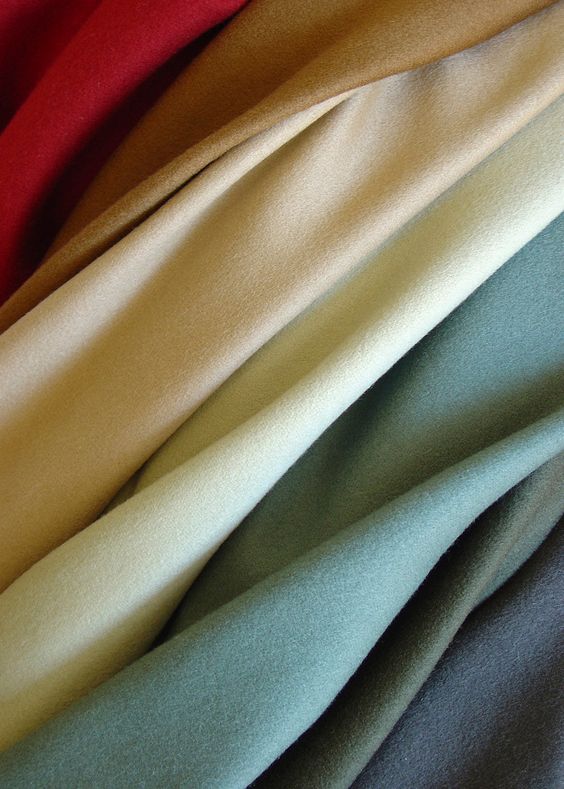
In order to gather the fine undercoat fibers, cashmere goats are usually combed twice a year, once in the spring and once in the fall. After the fibers are gathered, they are meticulously sifted and cleaned to get rid of contaminants and guard hairs. After that, the cashmere fiber is prepared to be spun into yarn and used to make a range of textiles, such as blankets, caps, scarves, and sweaters.

Lets talk about how this fabric is !
- Luxurious Touch – One distinctive quality that makes cashmere stand out from other natural fibers is its extraordinary suppleness. A luscious and decadent feeling is produced by the delicate threads’ easy glide across the skin. Cashmere’s inherent crimp, which holds air in place and gives the material a cloud-like texture, adds to its inherent softness.
- Sustainable and environmentally friendly: Compared to other textile manufacturing methods, cashmere production is comparatively sustainable. The fibers are gathered by gently combing the goats, who are nurtured in their native environment.
- Cashmere’s adaptability makes it suitable for a broad range of outfits and accessories. For jackets, dresses, gloves, caps, scarves, and sweaters, it is frequently utilized.
- High Value and Investment: Because of its labor-intensive production process and limited supply, cashmere is regarded as a luxury fabric. While cashmere apparel can be more costly than other materials, it is nevertheless a wise purchase due to its outstanding quality and classic style.
- Rich Drape and Stylish Appearance: Cashmere fabric has a stunning drape and a sophisticated, rich look. It has a gentle, flowing fall that is ideal for both formal and informal settings. It gives off an elegant, sophisticated appearance.
- Longevity and Sturdy Quality: Cashmere clothing has a long lifespan when properly cared for. The fibers can retain their softness, warmth, and beauty for a long time with careful handling and cleaning since they are inherently tough and resilient.
- Rich Colors and Natural sheen: The lustrous appearance of cashmere fibers is enhanced by their inherent sheen. Clothing made of cashmere is incredibly versatile and can be adapted to a variety of personal styles because it can be dyed in a broad spectrum of colors, from muted neutrals to vivid hues.
- Unmatched Warmth: Cashmere’s inherent crimp enables it to retain air effectively, giving it a superior level of warmth and insulation. Because of this, cashmere clothing is perfect for wearing in chilly climates, keeping you warm and comfortable even in the worst of circumstances.
- Lightweight and Breathable: Cashmere is surprisingly light and breathable for such a warm material. For easy movement and temperature regulation, cashmere clothing can be worn without feeling heavy or constrictive.
- Natural Hypoallergenic and Gentle on Skin: Cashmere is a skin-friendly material that is suited for even the most sensitive people. For anyone with allergies or skin sensitivities, it is a safe and comfortable option because it is devoid of irritating ingredients.

3. Fleece Winter Fabric
The soft, cozy, and cozy qualities of fleece, a synthetic fabric, make it popular. It has a soft, slightly fuzzy look and a warm feel because it is composed of brushed polyester strands. Fashionable and adaptable, fleece finds widespread application in clothing and accessories, rendering it a preferred option for both leisure and sports attire.

When American textile producer Malden Mills released Polarfleece, the first fleece fabric to be commercially successful, in the 1970s, fleece fabric began to take shape. With its warmth, softness, and ease of care, polarfleece became quite popular very quickly. Knitting, bonding, and needle-punching are only a few of the methods used by numerous businesses worldwide to generate fleece these days.
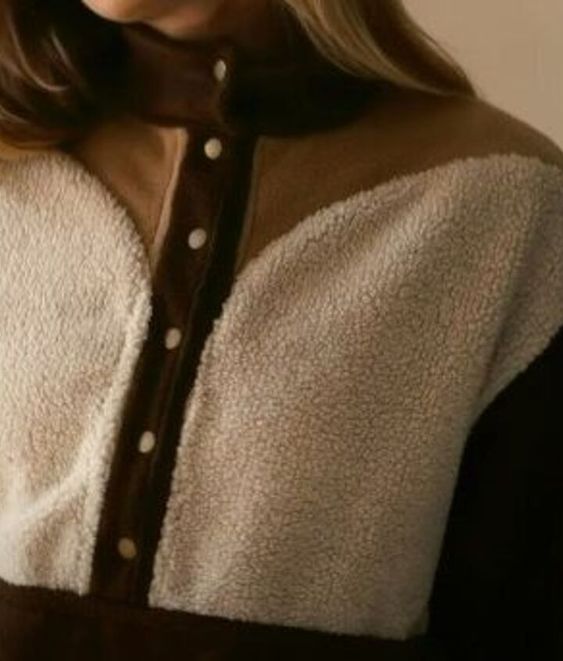
Some properties of fleece winter fabric are :
- Softness and Comfort: Fleece is perfect for clothing that is worn next to the body because it is remarkably soft and comfortable on the skin.
- Warmth and Insulation: Because fleece effectively retains air, it offers superior warmth and insulation. It is a wonderful option for activewear and clothes for colder climates.
- Lightweight and Breathable: Even at milder temperatures, fleece is comfortable to wear because it is both lightweight and breathable.
- Easy Care: Fleece dries rapidly and can usually be machine washed, making it an easy-care fabric.
- Fleece is a resilient and long-lasting fabric that can tolerate normal wear and tear. It is not easily damaged or pilled.
- Versatility: A versatile fabric, fleece can be used to create a large range of outfits and accessories, such as blankets, throws, hats, scarves, gloves, sweaters, coats, and slacks.

4. Cotton Winter Fabric
The cotton plant, Gossypium, belongs to the Malvaceae family of mallow plants. Cotton is a soft, fluffy staple fiber that grows in a protective shell called a boll around the seeds of the plant. There may be trace amounts of waxes, lipids, pectins, and water in the fiber, which is nearly pure cellulose. Natural circumstances will cause the cotton bolls to spread the seeds more widely.

With over 5,000 years of cultivation, cotton is one of the most frequently used fibers in the world. It is a natural fiber that works well with a wide range of fabrics and clothes since it is soft, breathable, and absorbent. Cotton’s enormous appeal can also be attributed to its low cost and ease of maintenance.

The fabric cotton is :
- Softness & Comfort: Cotton’s pleasant and soft fibers against the skin make it a popular fabric for clothing and bedding.
- Breathability: Air can easily flow through cotton fabric, which makes it a great material to wear in hot weather.
- Absorbency: Cotton is a very absorbent fabric that can take in a lot of moisture without feeling damp. This makes it an excellent choice for products like towels, bathrobes, and other items that need to be able to absorb moisture.
- Sturdiness: Cotton fabric is resilient to typical wear and tear and sturdy.
- Easy Maintenance: After being machine washed, cotton fabrics frequently dry quickly.

5. Flannel Winter Fabric
A soft cloth with various thread counts is called fleece. Although it was formerly created from worsted yarn or carded wool, fleece is today frequently made from synthetic, wool, or cotton fibers. Blankets, sleepwear, bed linens, and tartan clothes are frequently made from fleece. Plaid is common on flannel shirts. Flannel can be brushed for added softness, or left untouched. A fine metal brush is used to mechanically brush the fabric, lifting fine fibers from the loosely spun yarns to create a nap on one or both sides. In its woven shape, the loosely spun yarn gives the flannel its softness if it isn’t napped.

Some properties of flannel fabric are :
- Flannel is a popular fabric for blankets and clothes because of its exceptional softness and comfort on the skin.
- Warmth: The napped surface of flannel retains air and offers superior insulation and warmth. It is a wise option for bedding and apparel for the chilly months.
- Breathability: Flannel is a warm fabric that allows air to pass through it despite its warmth. Because of this, it’s a cozy option for year-round wear.
- Durability: Flannel fabric is resilient and able to tolerate normal wear and tear.
- Easy Care: Flannel clothes dry rapidly and can usually be machine washed.

Types of Fabric Flannel
There are numerous varieties of flannel fabric, each having special qualities and uses. Several prevalent varieties of flannel fabric consist include:
- The most popular kind of flannel is cotton, which is prized for being breathable, warm, and soft.
- Wool flannel is a sturdy and cozy variety of flannel that is frequently used for jackets and blankets.
- Synthetic Flannel: Frequently used for apparel and bedding, synthetic flannel is more affordable and resistant to wrinkles.

6. Velvet Winter Fabric
Velvet has been valued for ages for its unmatched comfort and elegance. It is a fabric known for its extraordinary softness, warmth, and opulent feel. Velvet is a form of woven tufted fabric with a characteristically soft texture. It is made from a short, dense pile of evenly cut threads. Therefore, “smooth like velvet” is what the word velvety implies. Velvet used to mostly be made of silk. Velvet can now be fashioned from synthetic fibers, cotton, wool, and linen.

With a long and illustrious history, velvet was formerly associated with royalty and wealth in ancient cultures. Because of its complicated and drawn-out manufacturing process, it was a luxury item only available to the wealthy. Velvet production methods changed over time, and the material got more.

Properties of this fabric are:
- Exceptional Softness: The surface of velvet is exceptionally smooth and velvety to the touch because to the incredibly fine and thick fibers.
- Unmatched Warmth: The thick layer of velvet fibers efficiently traps air to produce remarkable warmth and insulation.
- Vibrant and Rich Colors: The inherent sheen of velvet accentuates the hues’ vibrancy and richness. It can be colored in a broad range of tones, from soft neutrals to vivid and striking hues.
- Velvet has a lovely drape and an opulent appearance that lend sophistication and beauty to any piece of clothing or home décor.
- Durability and Resilience: Velvet clothing and furniture may endure for many years with proper maintenance. The fibers are comparatively robust and tenacious, and they can be preserved for a long time in their softness, warmth, and beauty with careful handling and washing.
- Diverse Uses: Velvet is not just for clothes; it has many other uses as well. Along with upholstery and draperies, it’s a well-liked option for pillows, throws, and other home décor pieces.

Types of Velvet Fabric
- Silk velvet is renowned for its remarkable softness, sheen, and drape and is thought to be the most expensive and opulent kind of velvet.
- Breathable and easy to maintain, cotton velvet is a less expensive substitute for silk velvet.
- Wool velvet, which is frequently used for upholstery and outerwear, offers remarkable warmth and durability.
- The blend of low cost, high resilience, and effortless maintenance makes synthetic velvet a well-liked option for a range of uses.

https://en.wikipedia.org/wiki/Velvet
7. Corduroy Winter Fabric
Thanks to its characteristic texture, longevity, and versatility, corduroy—a fabric known for its wales or parallel ridges—has been a favorite option for decades. The term “corduroy,” which comes from the French “corde du roi,” which means “king’s cord,” has long been connected to grace and style.

There is proof that corduroy was produced in Egypt, India, and China, tracing the material’s history back to prehistoric times. Especially among nobles and royalty, the cloth became very popular throughout Europe in the Middle Ages. A common fabric for apparel, upholstery, and other home goods by the 18th century was corduroy.
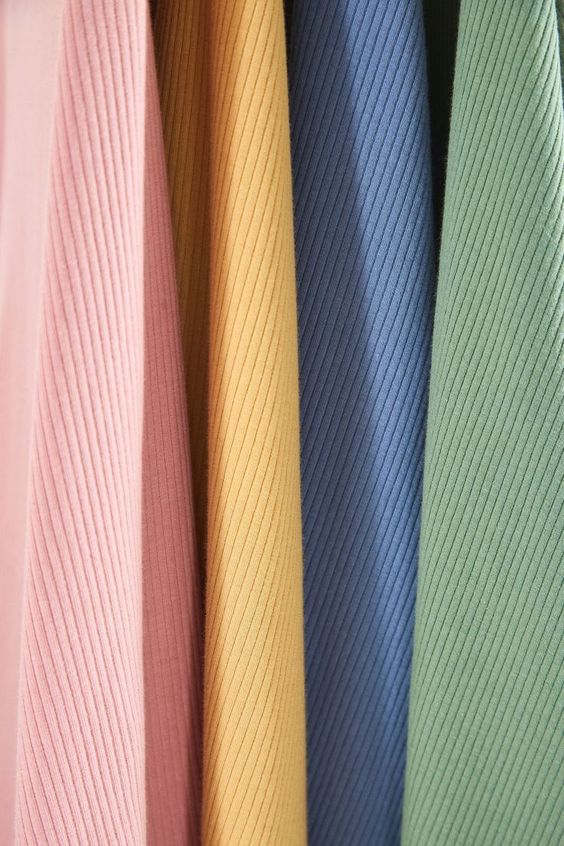
Properties of the fabric
- Unique pattern: By chopping excess weft strands and leaving loops on the surface, corduroy achieves its recognizable ribbed pattern. The thickness of the corduroy varies depending on the width of the wales, from thin pinwale to thick elephant cord.
- Durability and Resilience: Corduroy is a fabric that is well-known for its capacity to tolerate normal wear and tear. It is very durable. The elevated wales offer increased durability and abrasion resistance.
- Comfort and Softness: Corduroy is a popular material for furniture and apparel because it is usually comfortable and soft against the skin.
- Warmth and Insulation: The napped surface of corduroy effectively traps air, giving it warmth and insulation, which makes it perfect for wearing in cold weather.
- Versatility: The uses for corduroy go beyond apparel. Along with upholstery and draperies, it’s a well-liked option for purses and other home décor pieces.

Types of the fabric
- Manchester Cord: Distinguished by its balanced drape and medium-width wales, Manchester corduroy is the most popular variety.
- Pinwale Cord: This type of corduroy has thin wales and a smooth, sophisticated appearance.
- Elephant Cord: Extra warm and long-lasting thick corduroy with broad wales.
- Bedford Cord: A corduroy design that alternates between broad and narrow wales to produce a striped appearance.
- A soft, fluffy corduroy with a slightly elevated pile is called needlecord.
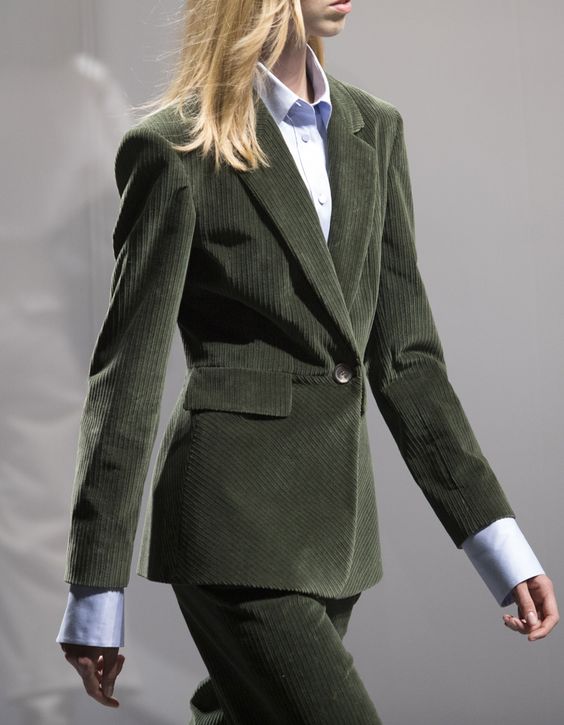
For more like these connect :


